Landscaping with wood chips: 13 expert ways to use them in your yard
These clever ideas for landscaping with wood chips will help you suppress weeds, create pathways, enhance foliage, and bring your garden alive with texture


Often underrated, there are many brilliant ideas for landscaping with wood chips. Affordable, sustainable and easy to source, this amazing waste product of the timber industry is an attractive and speedy way to smarten up your outside space.
With plenty of different grades, types of timber – each with their own characteristics – and even different tree bark to choose from, you can get creative with the surface you create as well as how and where you choose to use them as part of your landscaping ideas.
Use wood chips to cover vast areas under trees, play equipment or as a quick fix to disguise a sun scorched patch of lawn. Alternatively take advantage of its insatiable appetite for suppressing stubborn weeds and spread it as a mulch under shrubs, trees or to create informal paths throughout your garden.
A good layer of wood chips also excels at keeping in moisture – something invaluable in this ever-warming climate. Not only will it help reduce the hours you spend watering and the amount of water you use, but as they biodegrade the timber fibres will break down and enrich the soil with nutrients too.
Give these ideas for landscaping with wood chips a go
From creating a woodland seating area to making meandering paths and productive veg beds, there are endless ideas for landscaping with wood chips to inspire you.
1. Use wood chips to create meandering paths
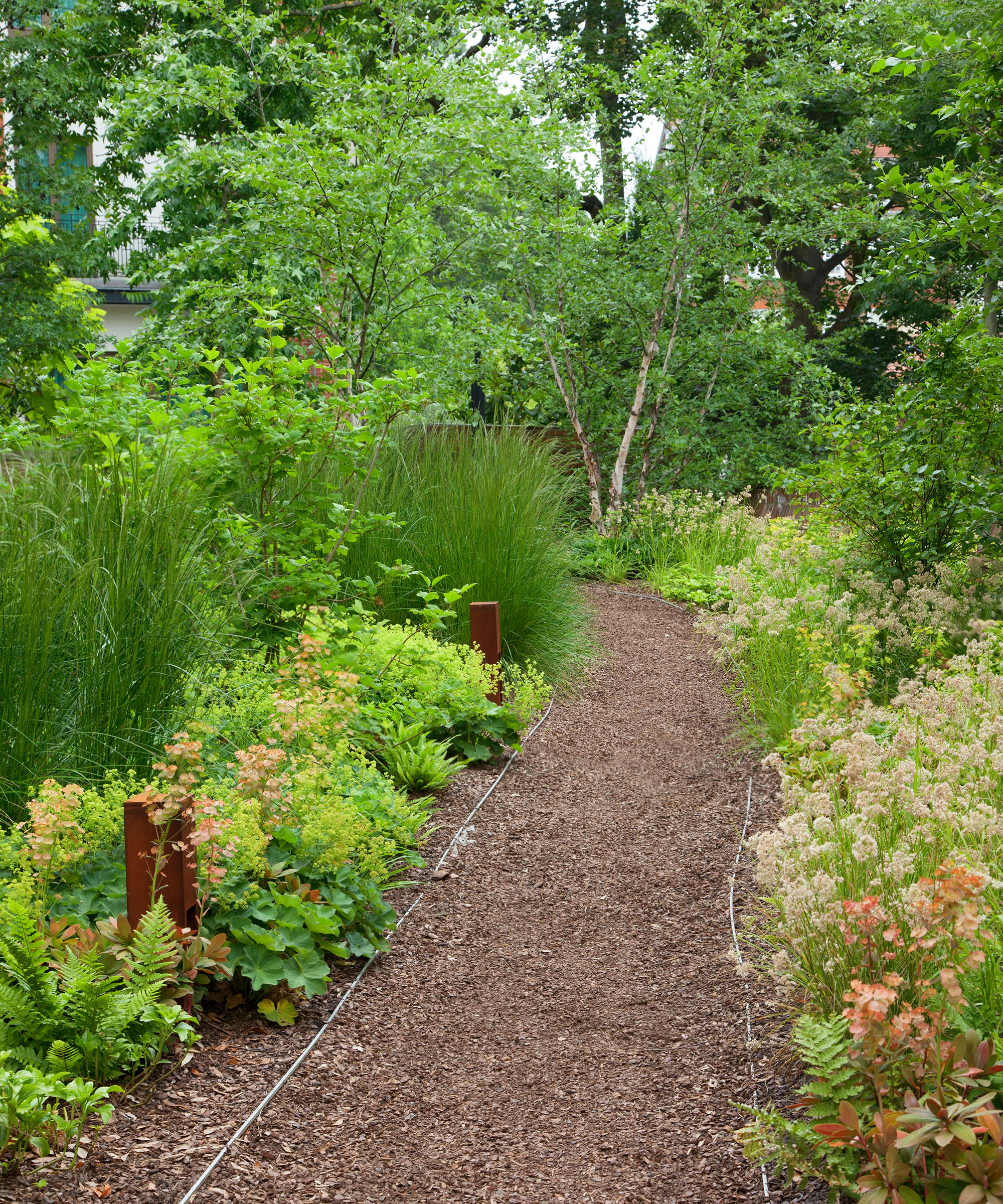
What can be more enchanting than following a wood chip garden path that weaves its away around your garden. Dry and cushioning underfoot, wood chippings need little in the way of ground prep. In fact, when landscaping with wood chips you can lay them directly on any surface and, providing that they are at least 2 inches deep, they will often prove impenetrable to weeds while still letting rainwater drain through, meaning they are also good for garden drainage.
Do bear in mind though that they can blow away in very windy and exposed locations or can get kicked about by little feet or garden visitors of the four pawed kind. To limit this and keep an element of neatness, try adding some smart garden edging ideas to your walkways to keep the ground covering where you need it most. A raised border of stones, metal garden edging, half sawn logs or lengths of ready-made log roll all work well and complement the natural material beautifully.
2. Show off the texture of bark chips

Areas of fine bark chippings can look surprisingly classy if they are in the right garden setting. Darker and glossier than wood chips, they tend to sit flatter and add amazing textural contrast to both hard landscaping materials and lush foliage.
Show them off to max effect by keeping the edges of your paving ideas meticulously straight and planting neat and regimental too.
For a bold, contemporary edge, opt for foliage plants with large, verdant green leaves. Hostas, Fatsia japonica, phormiums and epimediums are all ideal candidates, with the tactile but uniform backdrop of the chippings highlighting the foliage’s shape, structure and individual markings.
Pine bark chippings are most easily found but it is possible to find other types including cedar and Black Walnut.
3. Introduce wood chips for a magical woodland

Adding that surprise element to your backyard is a great way to mark the changing seasons and to draw your attention to different – often overlooked – areas.
A shady spot under trees or shrubs is the perfect place for creating a fleeting but colorful carpet of blooms, and what can be better to show them off than a covering of bark chippings as a simple but effective way of landscaping around trees?
Delicate cyclamen, gleaming snowdrops, cheery Lesser celandine and the star-like blooms of the windflower are some of the best woodland plants and will thrive amongst leaf litter and wood chips as well as providing a valuable nectar source for early pollinators.
4. Design a budget-friendly patio with wood chips
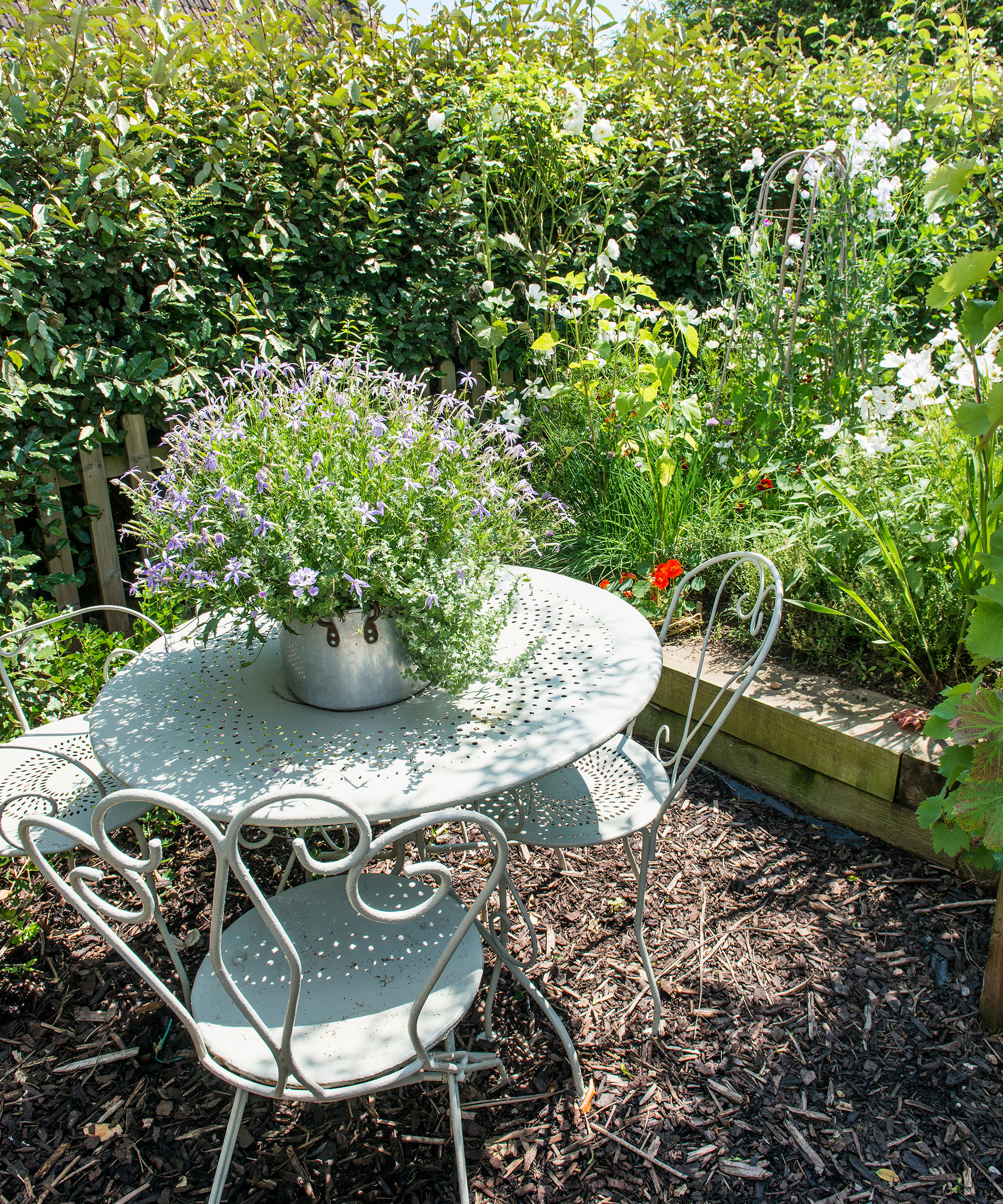
If you're looking for a cheap landscaping idea, wood chips could be the simple solution you're searching for.
Inexpensive when compared to other patio materials, it's ideal for creating a rustic vibe that's easy to maintain. Simply top up the chippings as they become trampled down over time.
Tucked away at the end of the garden, we love the look of this secluded seating space. Teamed with a pretty bistro set, it's the perfect set-up for a quintessential English cottage garden vibe.
When using wood chips to create a patio, it's always a good idea to get rid of weeds from the area first, level the earth to create a flat surface, and then add a layer of landscaping fabric before finishing with the wood chippings.
5. Create a peaceful seating area
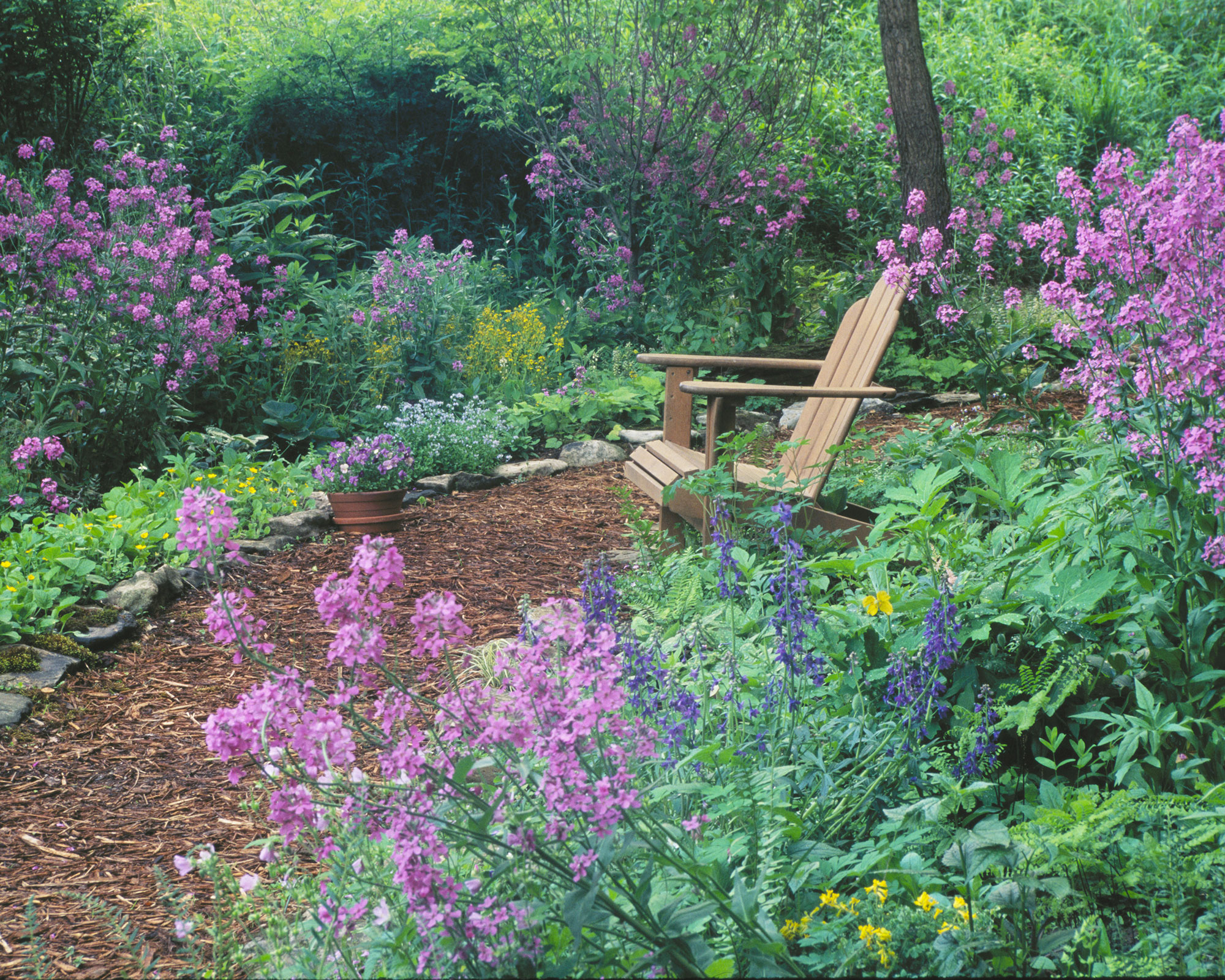
Are you lucky enough to have a favorite place to sit in your backyard? A place to soak up some peace and tranquility? Well make it official by landscaping with wood chips to create a woodland-style outdoor seating area.
Preserve the sense of place and put nature first by keeping it simple. A flat, cleared circle of wood chippings marks the spot without appearing too manmade or synthetic. Sawn logs, wooden benches or simple Adirondack chairs will add to the overall look, and don’t forget to add in the occasional smaller log for a handy table.
6. Use wood chips to emphasize a tropical vibe
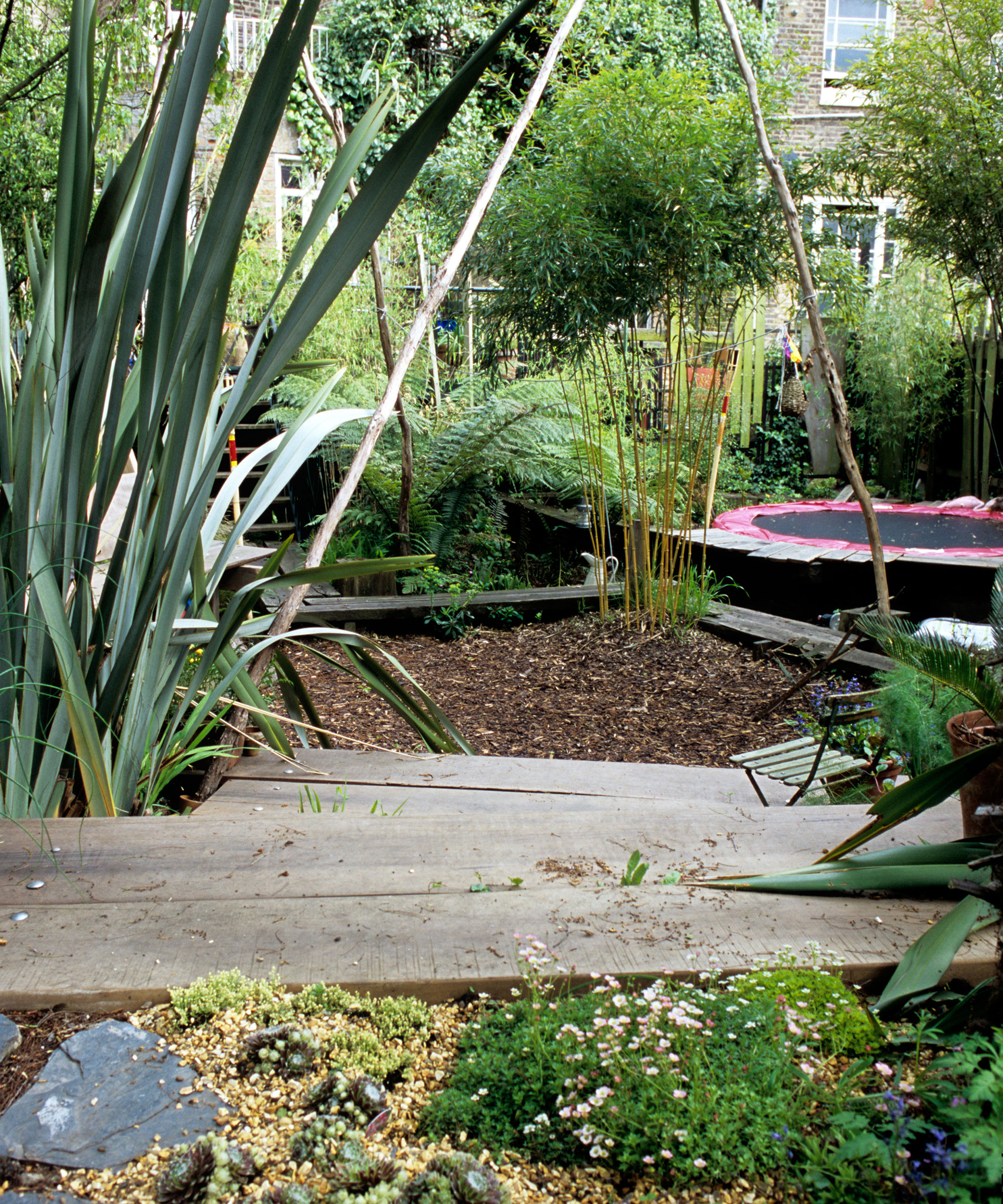
Fancy adding some tropical garden ideas to your plot complete with towering phormiums, magnificent bamboo and the occasional giant banana, palm or canna? Well with a bit of planning and preparation you can, and there's no better ground cover to complete the earthy and natural ambience than wood chips.
Easy to lay under and around the base of sizeable plants, they will also encourage their growth too by retaining moisture, suppressing weeds and helping to trap air and warmth at ground level.
Do opt for well composted wood chips though, as freshly chipped timber may still contain harmful compounds which can ‘burn’ young plants or prevent seedlings from germinating.
Complete the jungle feel by adding rich colored hardwood decking ideas, large stone boulders or rope edged boardwalks. You could even consider landscaping with cactus to further enhance the tropical vibe.
7. Treat borders to a natural finish
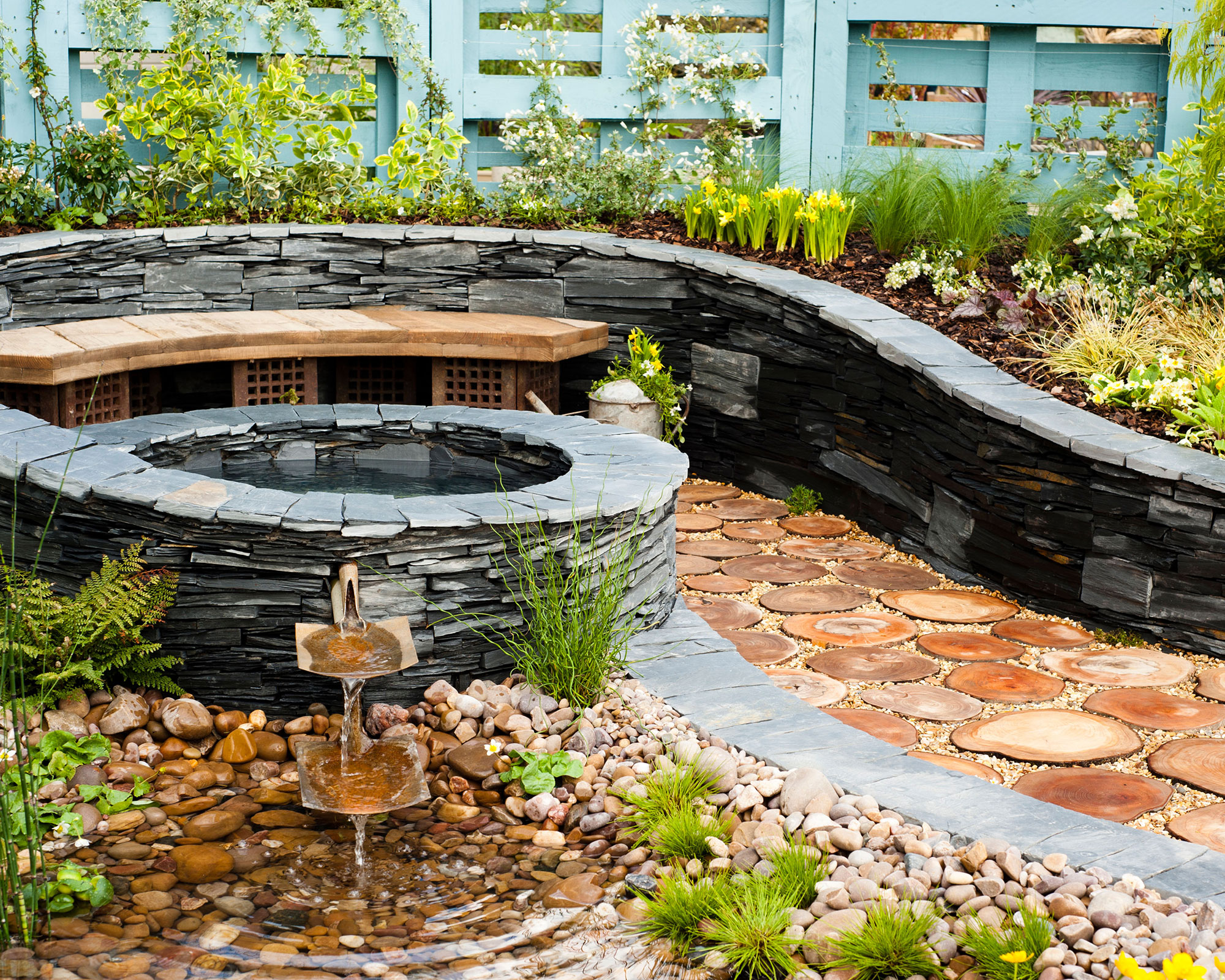
If you love a natural-looking garden that celebrates raw materials, sinuous lines and nature-inspired planting, wood chips are definitely your best friend for covering garden borders and any bare soil.
Ideal when landscaping with shrubs, they are dark in color so will visually recede, ensuring that your foliage and blooms are the true stars of the show. They’re also great for unifying a design, linking separate areas of planting to create a more cohesive result, but most importantly they introduce an element of texture which works beautifully alongside sawn logs, split slate, pebbles and shingle.
Aim for a 2in (5cm) deep layer on top of the soil and be sure to spread them around the base of each plant, taking care to cover right to the rear of the border.
8. Bring a softer touch to formal landscaping
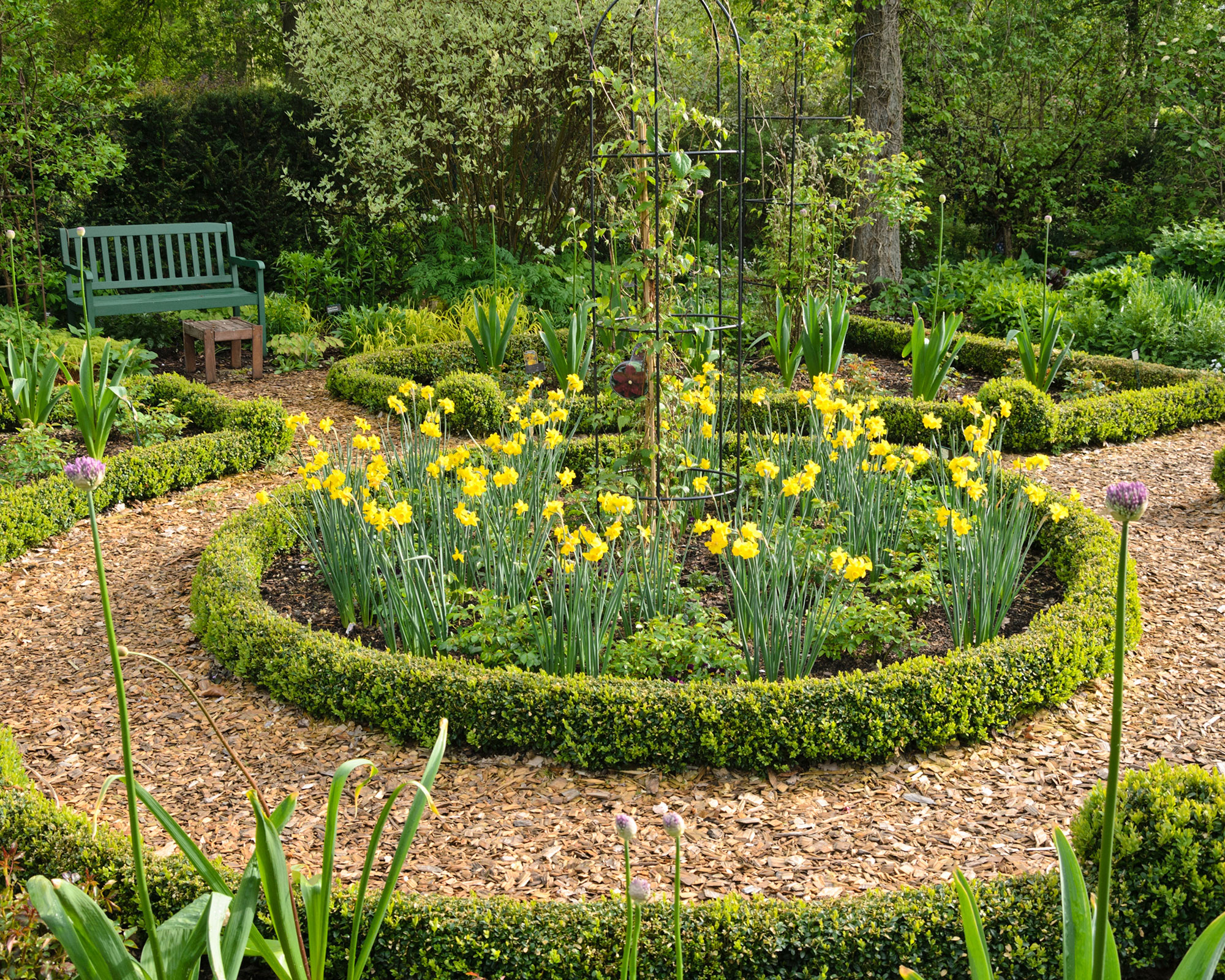
Known for their neat, precise lines and immaculately trimmed low boxwood hedges, parterre gardens are the epitome of Victorian style and perfect for making a big impact in a small space.
With the plot divided by hedging into smaller, symmetrical borders, the inner sections are usually planted up with annual bedding or seasonal stars such as tulips or roses and the paths covered with brick pavers or fine gravel. But why not go for a more casual approach?
Cover pathways with wood chips for a looser and chunkier surface and go for taller, light and airy landscaping with flowers within the borders. Delicate Tête-à-tête daffodils, pompom alliums and dainty verbena bonariensis will all raise the eye-level and give the space a more cosseting and intimate feel. Open wire obelisks also add year-round height and structure.
For a more contemporary take on this look, consider adding some landscaping with grasses to the mix to soften the formal feel and introduce more height and texture to your planting scheme.
9. Use wood chips to create a miniature landscape

Perfect for highlighting shrubs and low growing conifers, ornamental bark chips take just seconds to put down but really help to unite a large planted area. The beauty of this ground covering is that you can easily make changes or pop in a new plant as you see fit, with very little disruption.
This is a look that can work really well when landscaping with river rocks too, as you can make the most of spaces between plants by adding in a boulder or two. An ideal foil for the fine needles and seeds of conifers, they also add form and structure.
10. Make practical wood chip paths in a veg patch
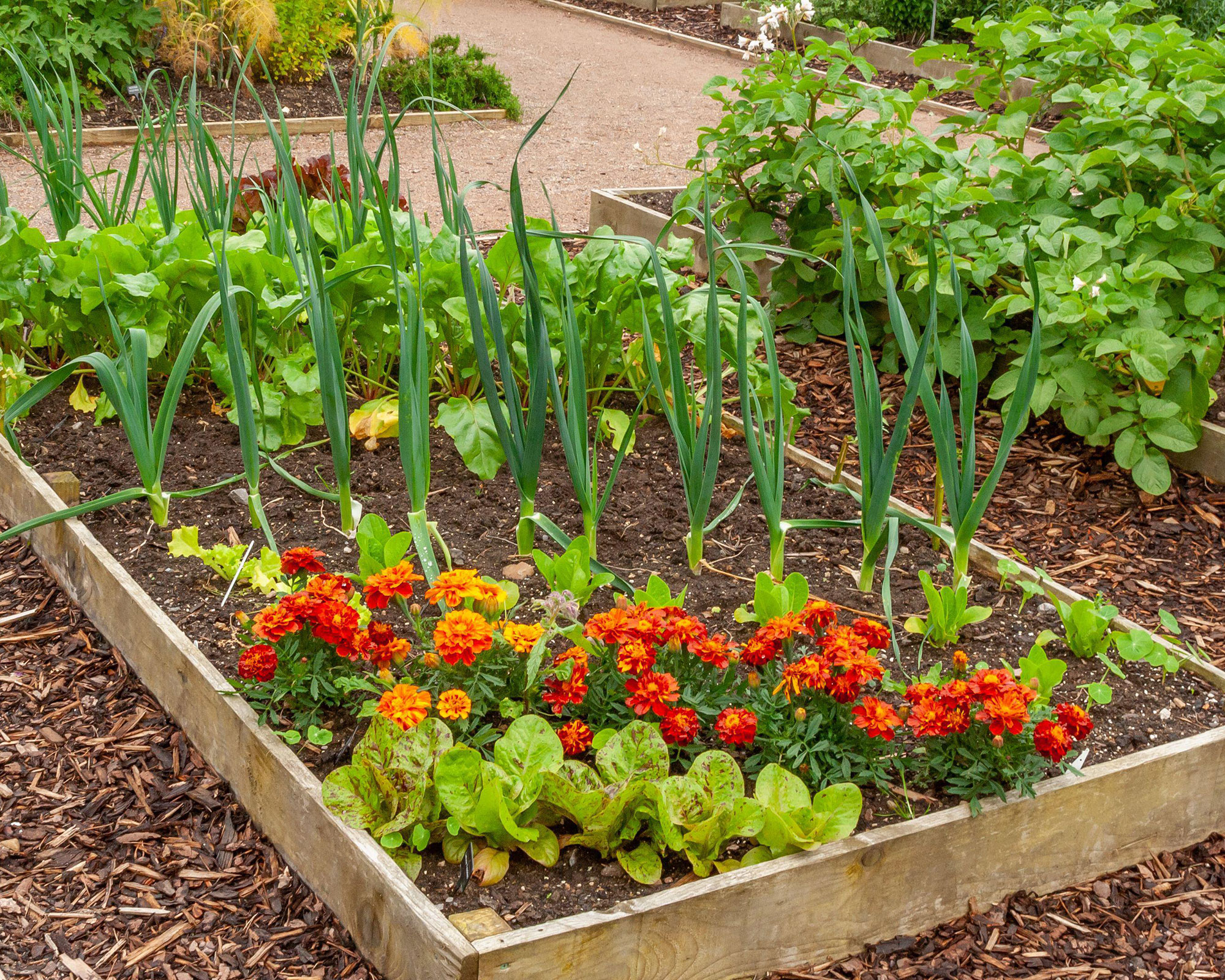
Landscaping with wood chips is an easy way to add a practical, attractive finish to your kitchen garden ideas.
Not only are wood chippings cheaper than other pathway materials, they are incredibly low maintenance and can easily be topped up when required. They make a great alternative to grassy paths too, as they won't become muddy and waterlogged during the wetter months when you're sowing seeds and maintaining the veg in your raised garden beds.
11. Add wood chips to patio containers
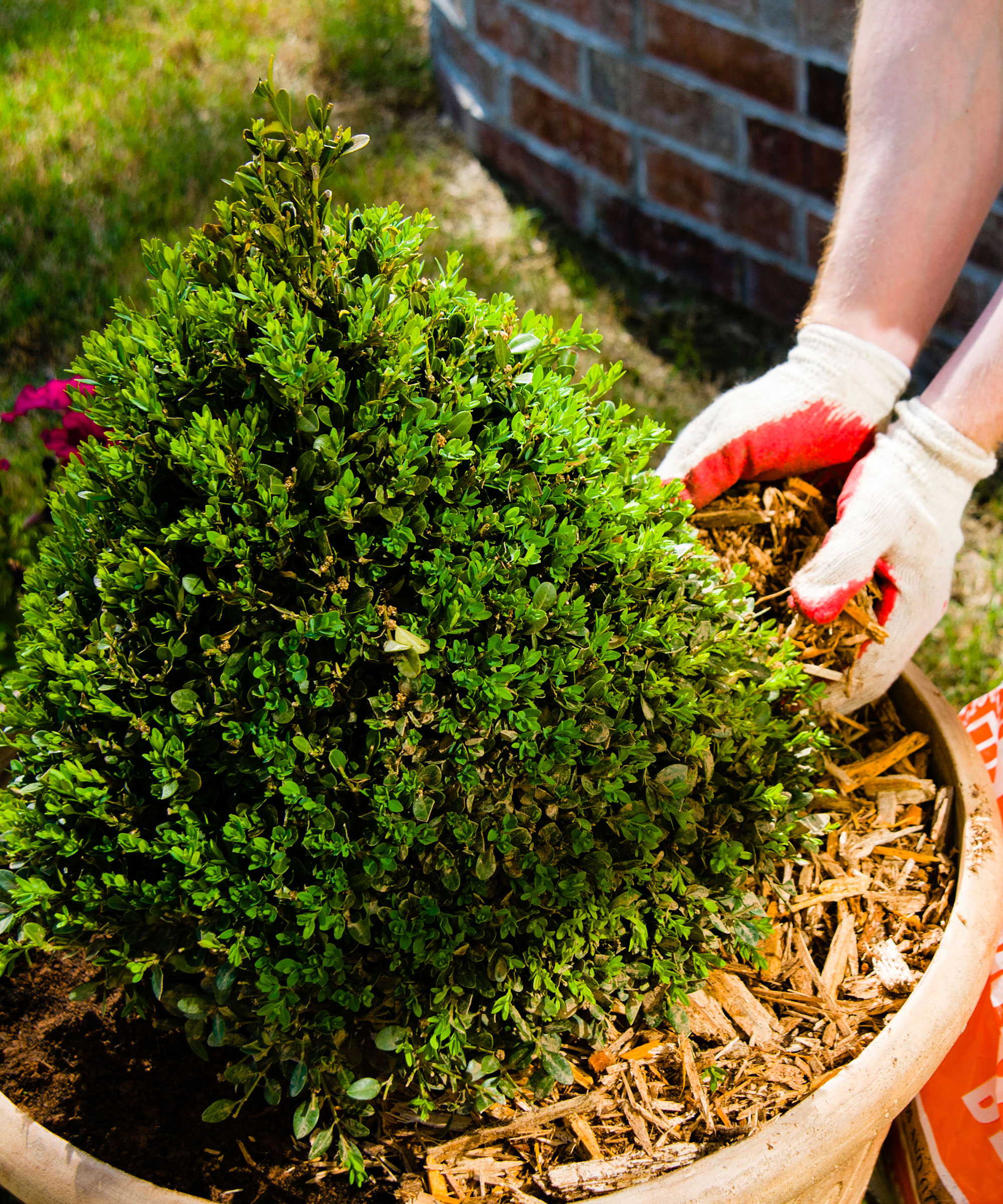
'Wood and bark chipping are great for mulching plants and pots,' says John Negus, expert for Amateur Gardening.
Not only will they add a decorative touch to your container gardening ideas, but mulching plants with a layer of wood chips can help to retain moisture in the soil, meaning plants will need less watering during the warmer summer months.
'Bark mulch is good for acid-loving (ericaceous) plants like rhododendrons, Japanese maples, heathers, camellias and blueberries,' adds John. 'However, avoid using it around lime-loving plants like pinks (carnations).'
12. Grow your own mushroom garden

When landscaping with wood chips you can create the ideal growing conditions for mushrooms, so make the most of them and create a gourmet growing spot in your backyard. Use mushroom spawn for the best results and soak a bucket load of wood chips in water for a week before using.
If you want to know how to grow mushrooms using this method, simply dig a hole in a shady spot and line with cardboard. Fill with your drained wood chips before scattering the area with mushroom spawn. Cover with another layer of drained wood chips and leave undisturbed. Watch closely over the next few weeks and wait for the mushrooms to form, before harvesting.
13. Add a stumpery to a shady spot

Not sure how to make the most of your garden’s shady spot? Then get creative with some tree stump ideas and make a stumpery. All you need is a collection of logs, tree stumps, log slices or dense branches – the more decomposed the better – and pile them up to create an interesting series of planting pockets.
Fill the gaps with a mix of fine wood chips and peat-free compost before planting with ferns and woodland loving plants such as delicate windflower, cyclamen, snowdrops, bluebells and wood anemones.
Are wood chips good for landscaping?
'Wood chips are an excellent option as your choice of mulch,' says the team at Suttons. 'They rot and feed the soil, which in turn feeds the trees or plants, they help to regulate the temperature of the soil, keeping the ground cooler in summer and warmer in winter, plus a good, thick protective layer of wood chippings prevents light getting to weeds, suppressing their growth and allowing plants to flourish.
'Try RHS Endorsed SylvaBark® Pine Bark Mini Mulch (available from Suttons) for all these benefits or, for the perfect finishing touch, use decorative bark, which offers a longer-lasting, hardwearing, water-retaining finish to beds, borders and paths.'
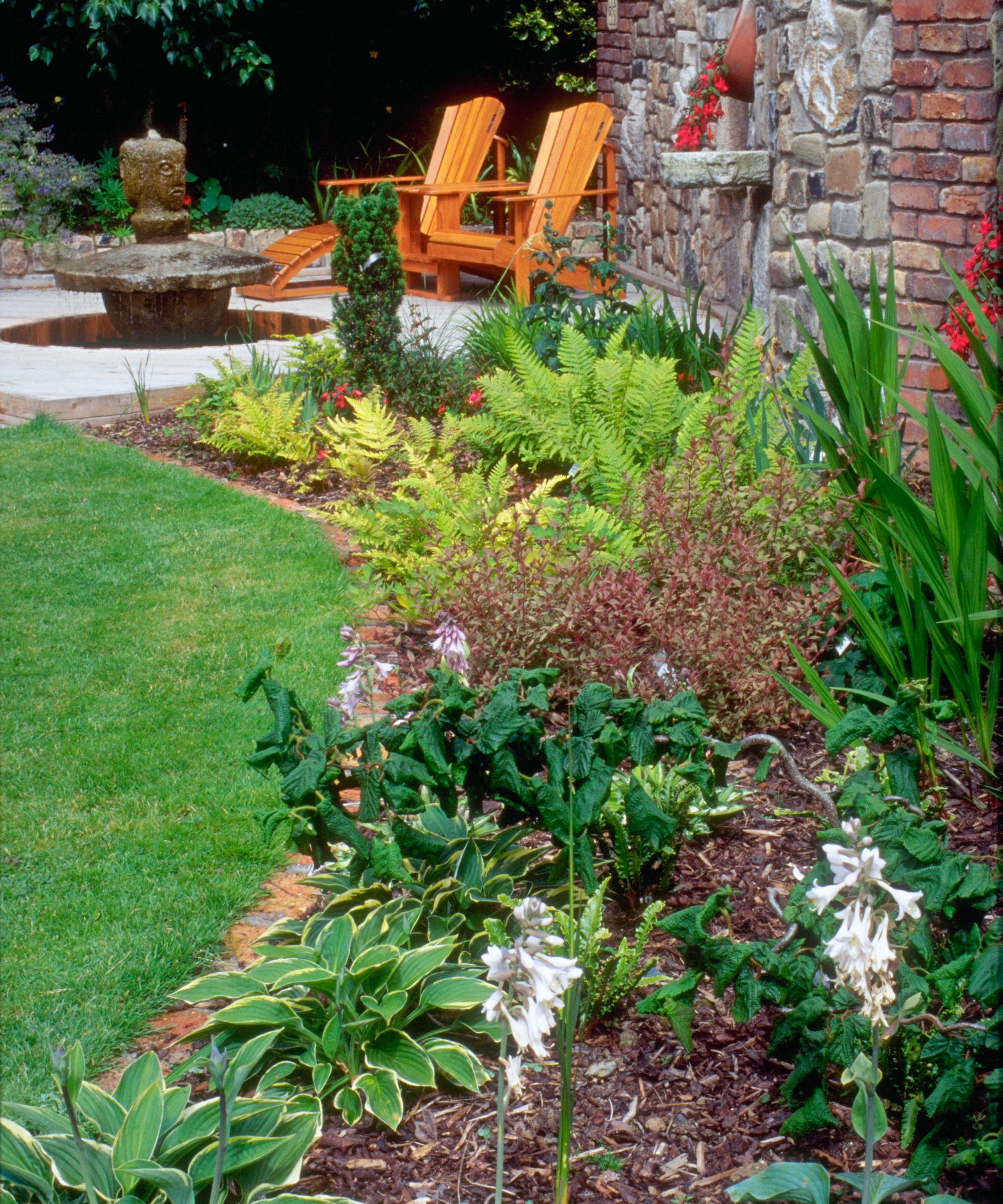
Which is better – mulch or wood chips?
This really depends on the job you intend to use them for. Mulch will rot down quicker than softwood chippings or bark nuggets, so is perfect for using on garden borders where nutrients are most needed. Wood and bark chips are much more hardwearing underfoot, so ideal for paths and seating areas.
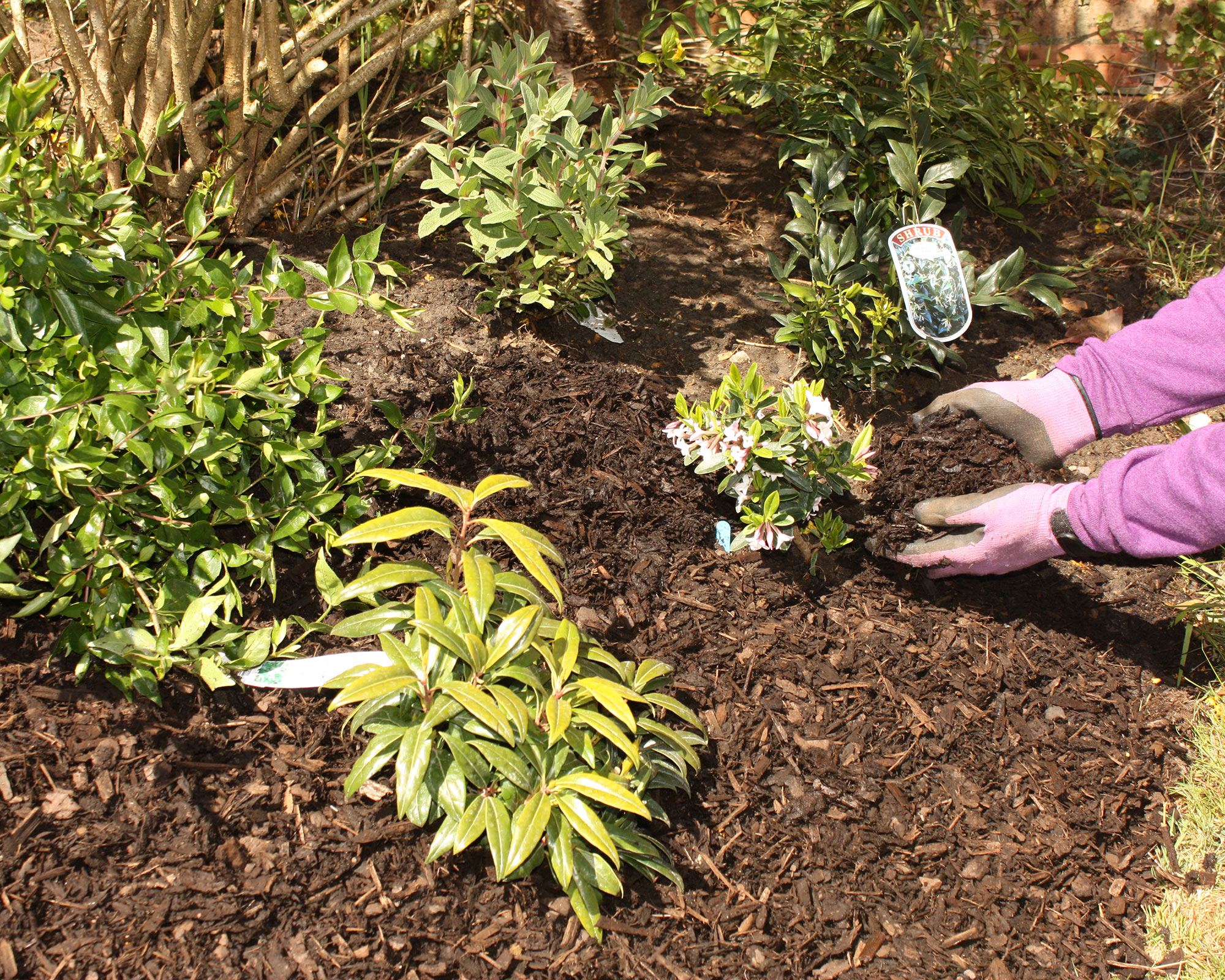

Jill puts her love of plants and all things garden related down to the hours spent pottering around with her Nan and Grandad when she was little. Today she is lucky enough to have a garden of her own in Surrey, England, and spends much of her time writing about them too.
